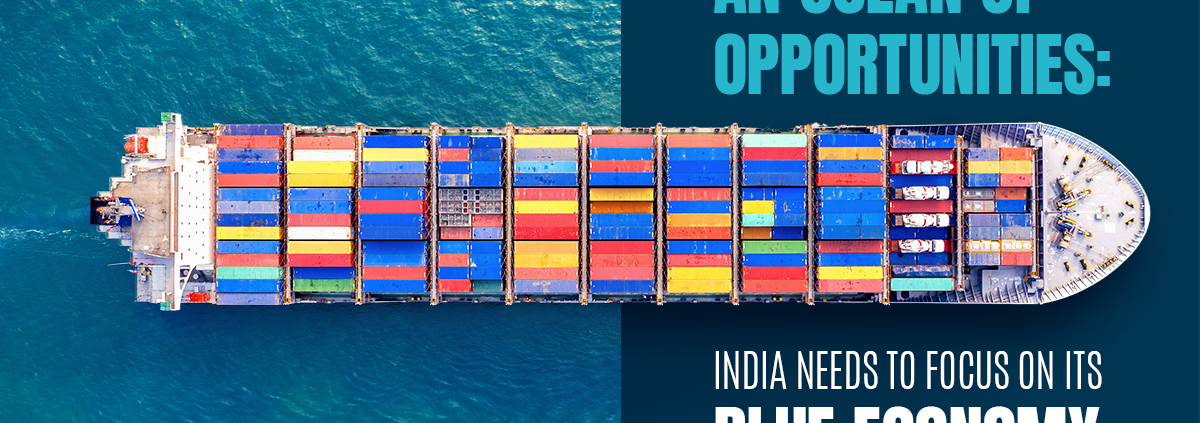Countries surrounded by seas and oceans are acutely aware of all the possibilities the vast waterbodies can offer them. India is no exception, with its long coastline of 7500 km and its rich history of reaping the benefits from the sea.
However, in the modern era, there has to be a consolidated and well-planned effort to harness the full potential of ocean resources and, at the same time, conserve marine ecosystems. This is the crux of the “blue economy”, which is considered to be the next great economic frontier.
Presenting the blue economy
The blue economy comprises activities such as fishing, aquaculture, ports, shipping, and other associated marine activities. India is well-positioned to maximize these activities in an organized manner and improve its overall economy, thanks to the coastline’s proximity to its exclusive economic zones (EEZ) that extend over 2.2 million square km.
Incidentally, India just became the world’s most populous nation, surpassing China. The country needs to explore every possible economic opportunity to promote the security and well-being of its ever-growing numbers. In this context, too, the blue economy will be vital to India’s future growth. The seas present a golden opportunity to promote development, ensure food security, and create future-proof jobs for its surging young population.
In fact, a key focus of India’s G20 presidency is the proper utilization and use of ocean resources for economic growth. A number of discussions around the blue economy are sure to take place, underlining the importance of this sector for future growth. At the same time, it is crucial to not lose sight of the fact that marine bodies are being impacted greatly by overfishing, climate change, pollution, and unchecked exploitation of other resources.
Opportunities — from fishing and aquaculture to marine parks and offshore mining
Sectors such as fishing, aquaculture, ports, shipping, and so forth offer a sea of opportunities. Fishing and aquaculture, particularly, are seeing rapid and sustained growth in India. The fishing industry has reported a double-digit average annual growth of 10.87% since 2014-15, with fish production touching a record of 161.87 lakh tons in 2021-22.
With a captive market for fish, the demand is always high. However, India now needs to step up its fishing activity and expand beyond just the domestic market. The export potential is sizeable — what is needed is tech-enabled processing and the development of cold storage chains. This can happen only if the private sector steps in, as the infrastructure requirement is huge.
Then there is ocean-based tourism, a sector in which India lags behind. In spite of a vast coastline and a number of beaches, the country does not really have oceanariums and marine parks of the size and scale needed to boost ocean-based tourism. The gap needs to be filled, as India has the potential to create a thriving tourism industry around its marine life.
Offshore mining is yet another sector associated with the blue economy. Mining metals such as copper, nickel, cobalt, and manganese in the seas is quite a profitable activity. This can be a vital source of income for the country. But it has its downside: The harm that may be caused to marine life. It is absolutely vital to ensure that deep-sea mining is done in a sustainable manner without damaging the fragile marine ecosystem. All in all, the blue economy can offer an avenue for India to take a quantum leap and reach the next level of development. The opportunities are there — they just need to be tapped sustainably.




